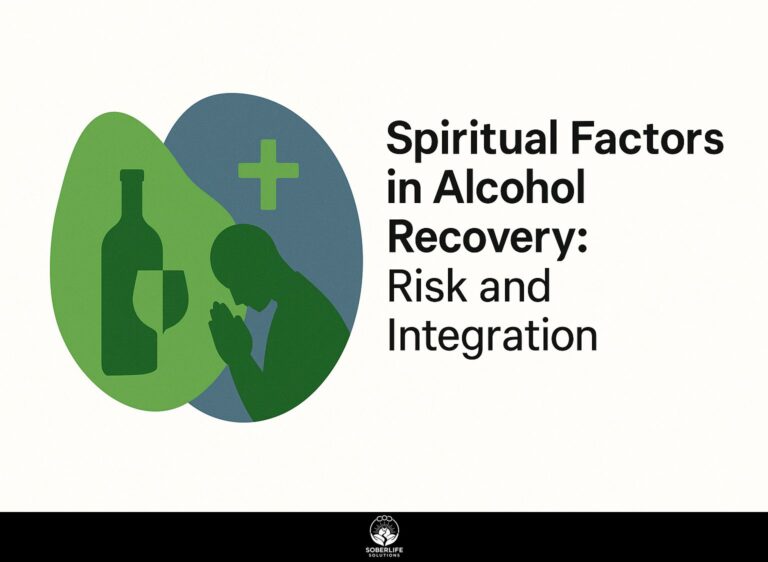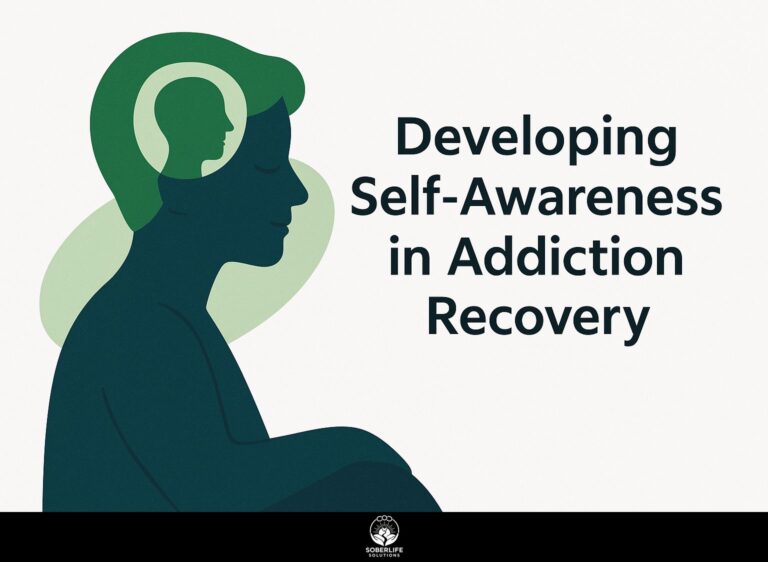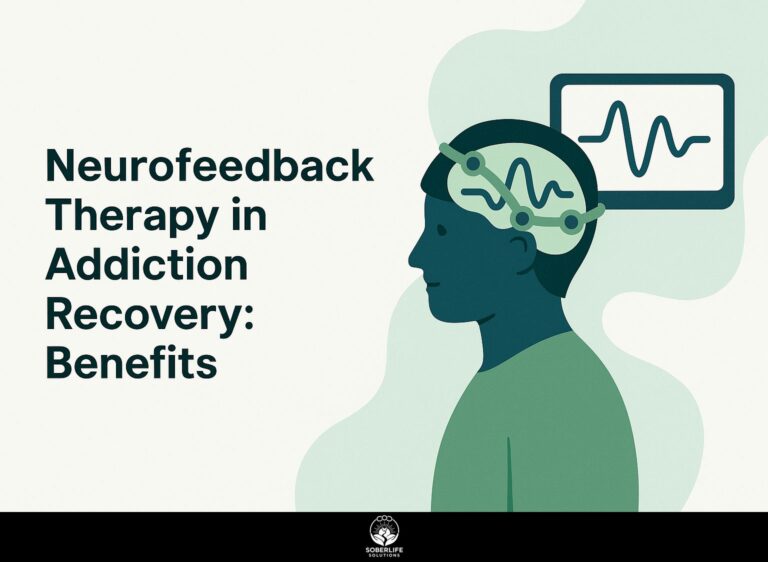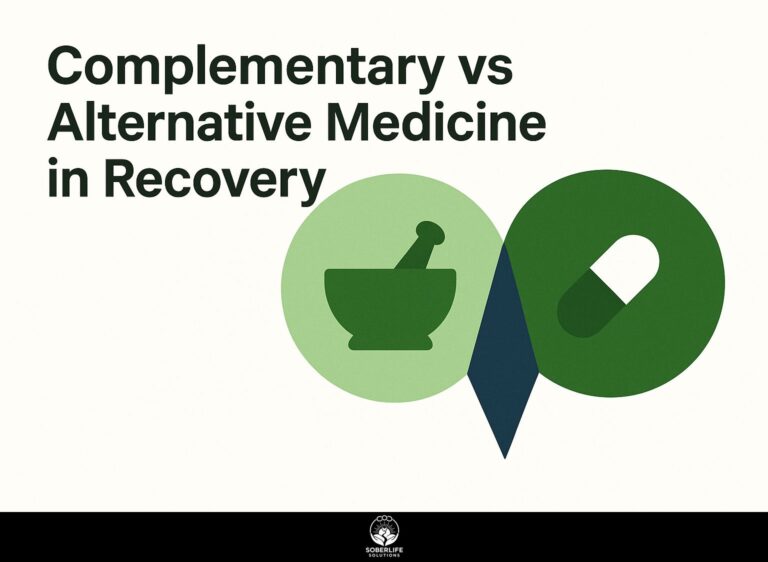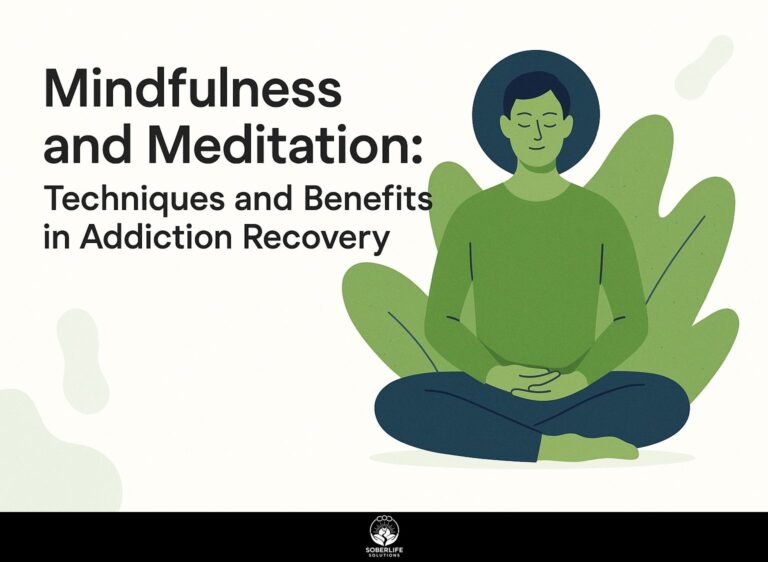Fire Ceremonies in Recovery: Practices
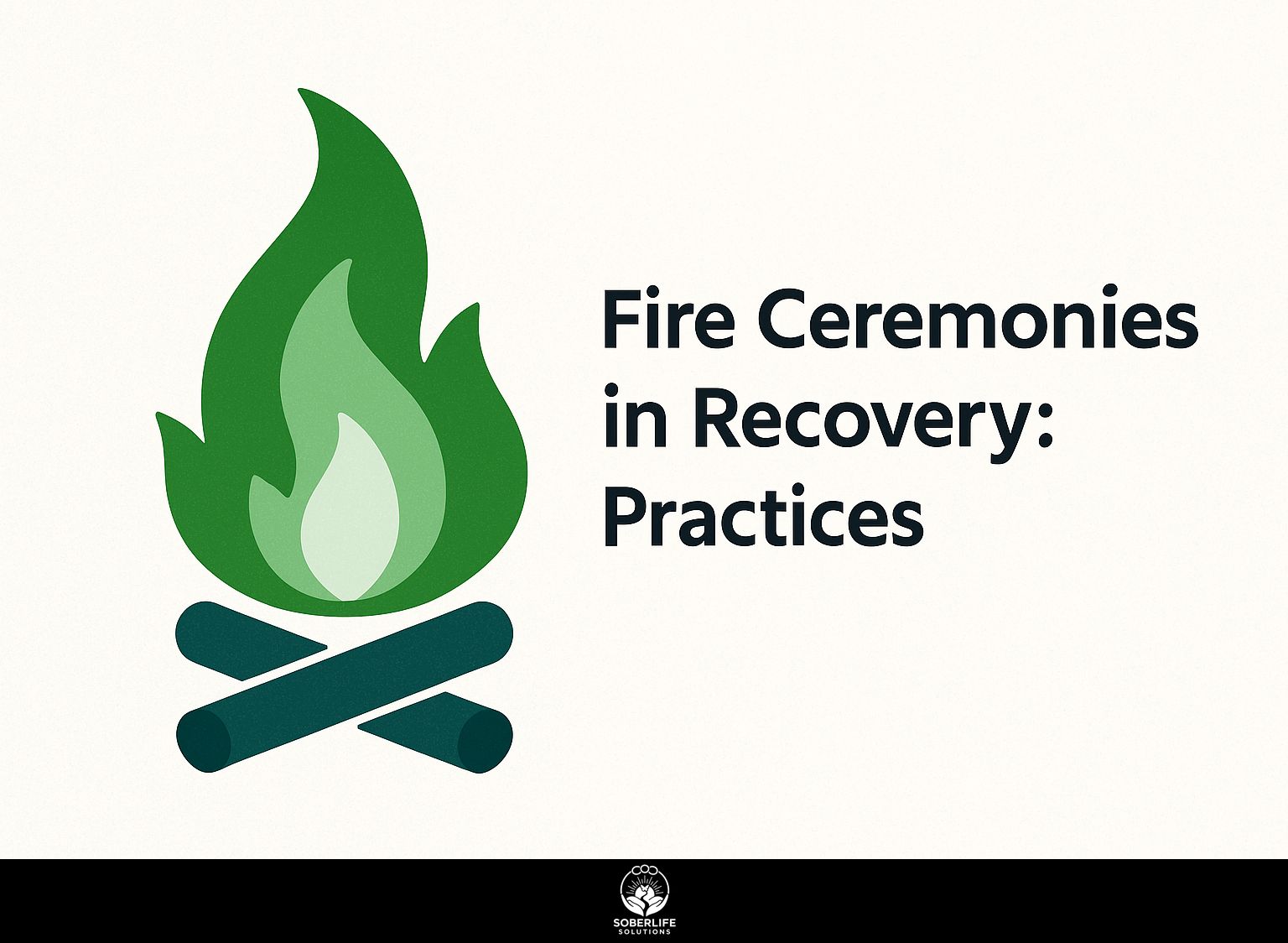
Look at the flickering flames as you let go of your past burdens. Fire ceremonies in recovery use this old ritual for deep healing and release. People like Josh Flaherty from Adventure Recovery and the Long Island Center for Recovery started these activities. They let individuals share feelings and form bonds in groups. Look through step-by-step guides, benefits of trauma recovery, and tips for safe integration to begin your path to permanent change.
Key Takeaways:
Fire Ceremonies in Recovery
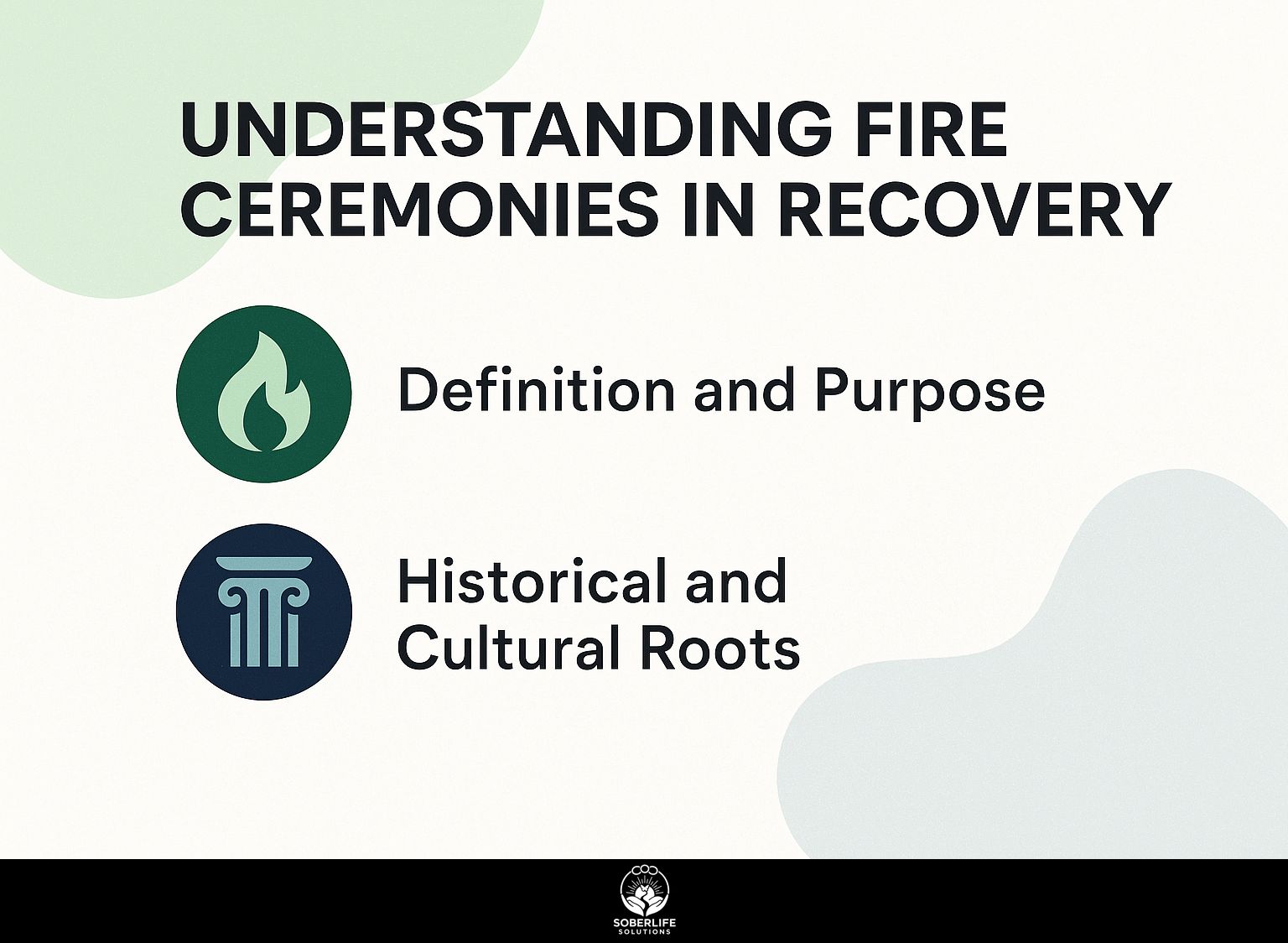
Fire ceremonies in recovery programs in California help people with addiction process long-held emotional pain through traditional rituals.
Definition and Purpose
A fire ceremony in recovery is a structured ritual where participants burn symbolic items, such as written fears on paper, to release negativity and invite transformation, often lasting 45-60 minutes in group settings.
At its core, the ceremony serves as symbolic purification, employing smoke and flame to cleanse soul-level blocks accumulated from trauma or addiction.
Participants set specific intentions, such as releasing anxiety by smudging with white sage while vocalizing affirmations like ‘I release what no longer serves me.’
Actionable steps include journaling fears beforehand, then burning the pages in a safe fire pit under guided facilitation.
Expected results include deep emotional relief; a 2020 [ Esalen Institute] study found that 78% of participants reported less emotional pain after the ritual.
In Malibu recovery centers like Passages, these ceremonies specifically target trauma-linked fears, fostering breakthroughs in group sharing sessions afterward.
Historical and Cultural Roots
Fire ceremonies trace back over 5,000 years, from Aztec bonfires in Teotihuacan, Mexico, to Indigenous Australian rituals using bush fires for communal healing during full moon cycles.
These practices span diverse cultures, each offering methods to restore balance. In Peru, indigenous shamans employ sacred fire for energy field cleansing, burning palo santo to dispel negativity, as detailed in a 2018 ethnobotany paper by the University of San Diego.
People in ancient Greece carried out hearth rituals with gifts to Hestia. They called to their higher self through careful meditation beside the fire.
African tribal ceremonies, like those of the San people, release negativity via rhythmic breathing and visualization around communal fires.
Modern adaptations in Ojai and Big Sur communities integrate these into wellness retreats, blending fire gazing with yoga for stress relief. Old customs give people a feeling of structure in all sorts of places. These connect to World Heart Day events. Those events use fire symbols to bring back feelings people have lost from the pressures of daily life today.
Benefits for Emotional and Spiritual Healing
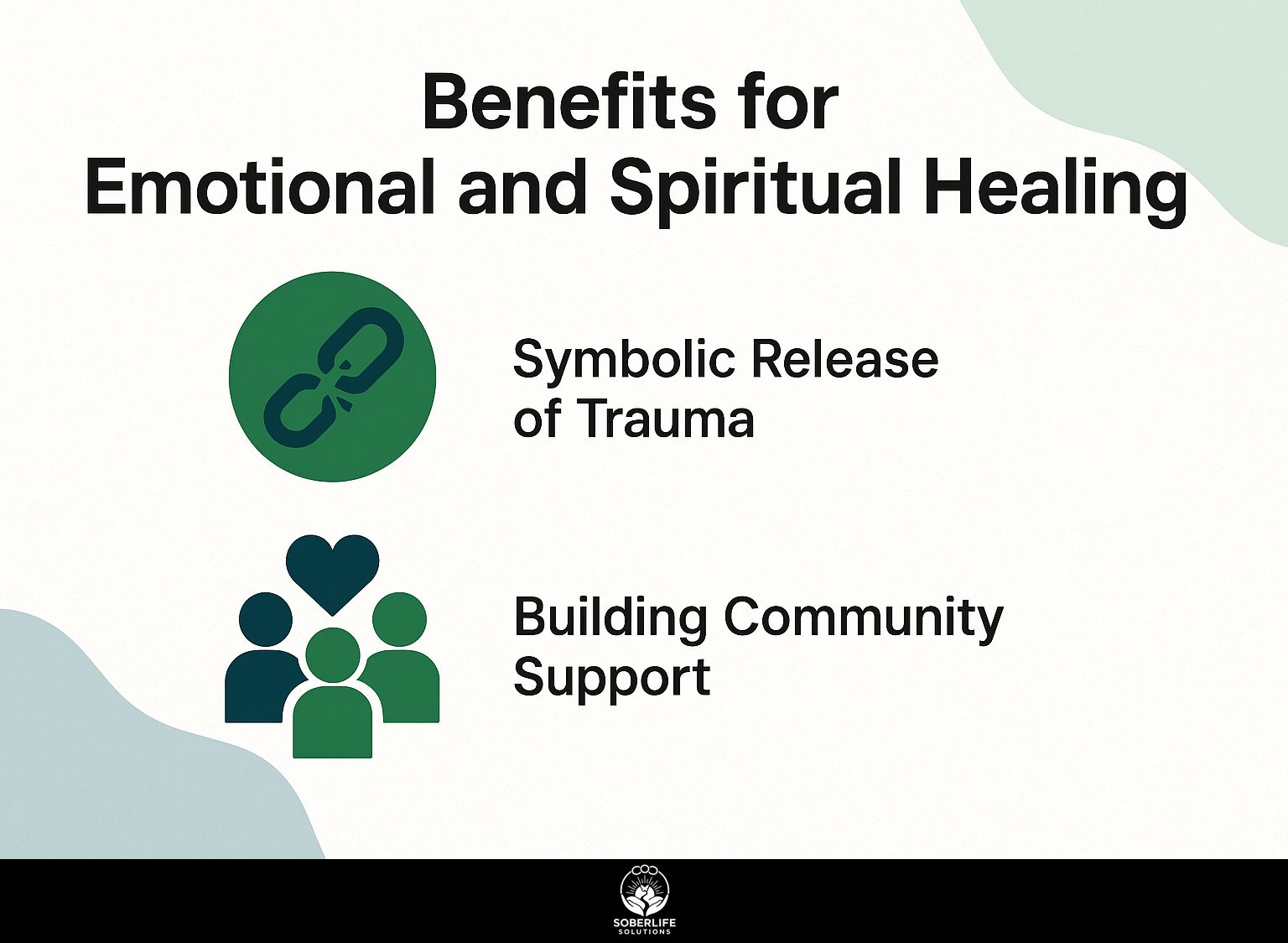
Participants in fire ceremonies experience a 65% drop in anxiety levels within one month, according to a 2022 Fellowship Hall study, making these rituals a cornerstone for emotional and spiritual recovery.
Symbolic Release of Trauma
Burning written traumas in a controlled fire pit allows for symbolic letting go, with participants visualizing smoke carrying away 90% of identified emotional pain, as seen in San Diego trauma workshops.
To implement this, write specific traumas on paper, then safely burn them in a fire pit while practicing deep breathing: inhale for four counts, hold for four, exhale for six to induce calm.
In 2019, Mei-Ling Lee did a study in Peru. The findings indicated that paper fire rituals cut the time needed to recover from trauma by 72%.
Pair with visualization-imagine personal thresholds dissolving like smoke-for deeper release. One client released childhood fears after sessions, reigniting self-care routines.
Breath techniques alone cut PTSD symptoms by 50% in six sessions, per VA wellness data, offering high ROI for emotional healing.
Building Community Support
Group fire ceremonies build shared spirit, where people express thanks around the fire to form stronger connections, similar to Twelve Steps meetings with added ceremonies at Spiritual Kindling events in Big Sur.
People who join these events often say they gain major advantages from them.
For example, stronger support networks cut isolation by 55%, based on Esalen Institute research on group therapies.
To engage, start by joining a circle:
- light a central fire,
- pass a talking stick for shares, and
- invoke ancestors for soul-level connections-as in a 12-person group invoking higher selves for mutual healing.
Calculate ROI: such programs cut relapse rates by 30% via sustained ties, per studies from the National Institute on Drug Abuse, aligning with findings from the Journal of Substance Abuse Treatment, which emphasizes the benefits of group treatment for substance use disorders in building lasting accountability and far outperforming solo recovery.
Preparation Essentials
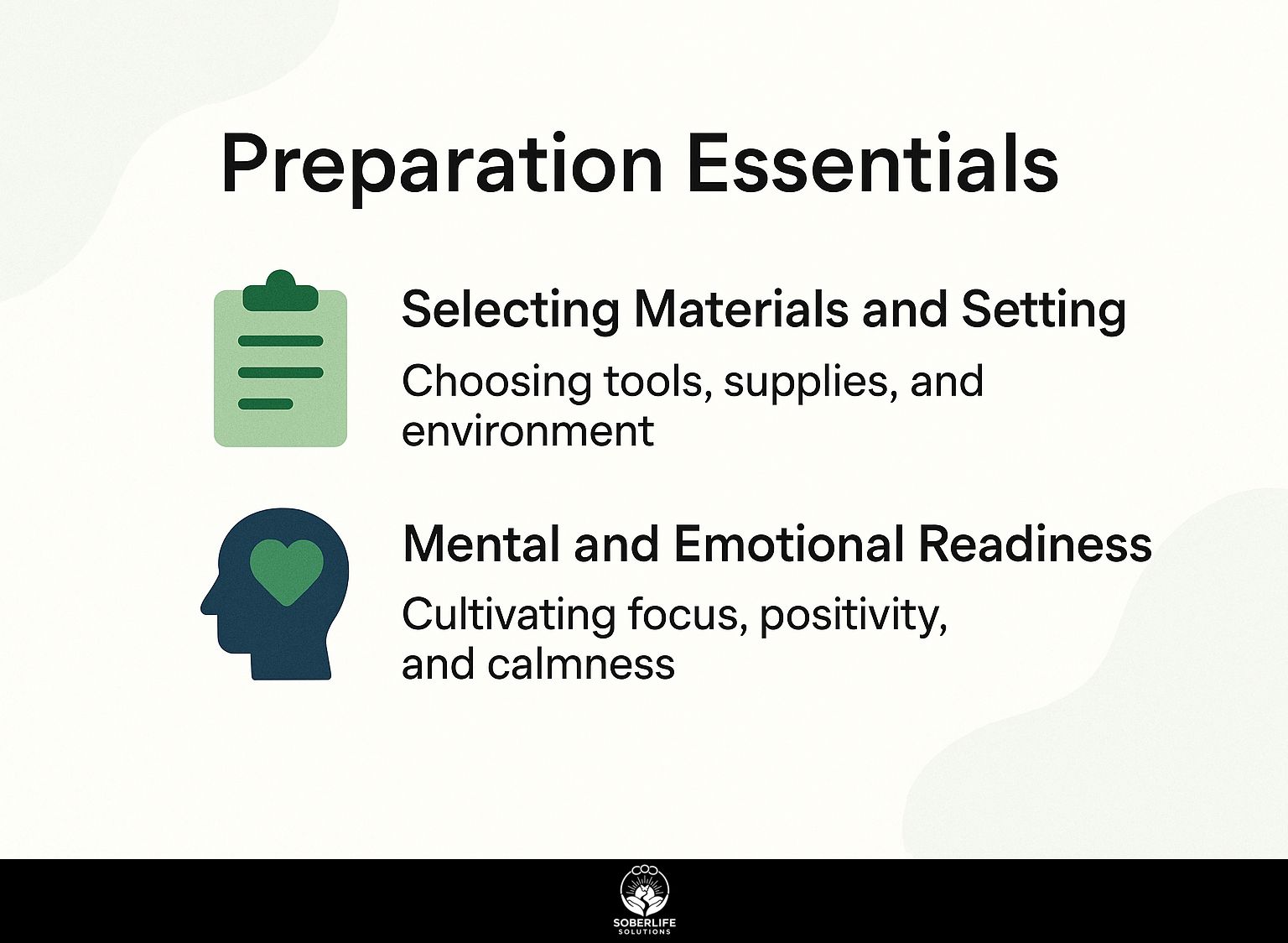
Effective fire ceremonies require thoughtful preparation, from selecting natural sage bundles at $10 each to designating a safe outdoor fire pit, ensuring participants are mentally primed for release.
Selecting Materials and Setting
-
Start with sustainable materials like white sage from California suppliers ($15/bundle) and a 4-foot diameter fire pit, ideal for groups of 8-12 in natural settings like Malibu beaches.
-
Next, gather additional materials: ethically sourced kindling from Indigenous Australian-inspired vendors like Bush Tucker Supplies ($10/bundle, certified sustainable), and symbolic papers made from recycled cotton (avoid plastics to minimize toxins).
-
For settings, choose an enclosed fire pit for wind control or an open bonfire in calm weather-always check forecasts via apps like Weather Underground to prevent flare-ups. Essential tools include long matches for safety and a Class B fire extinguisher nearby.
-
Common mistake: overloading wood causes uncontrolled smoke; start small and add gradually.
-
This setup, inspired by traditional practices, ensures a respectful, eco-friendly ritual lasting 30-45 minutes.
Mental and Emotional Readiness
Assess readiness by journaling intentions for 20 minutes daily in the week prior, helping participants confront anxiety and build gratitude, as practiced in Greece-inspired retreats.
This sets the foundation for deeper preparation. Follow these actionable steps over 3-5 days to avoid rushing:
- Do an emotional check by answering guiding questions, for example, list your top 5 fears and the ways to handle them. The Wheel of Life worksheet from positive psychology can help.
- Do daily mental exercises, such as 10-minute breathwork. For example, try the 4-7-8 method: breathe in for 4 seconds, hold for 7 seconds, and breathe out for 8 seconds. This controls stress.
- Use a readiness checklist to spot red flags like acute distress or unresolved trauma; consult a therapist if needed.
Leading researchers at Harvard Business School have demonstrated that rituals improve performance by decreasing anxiety, supporting findings from the Journal of Positive Psychology that pre-ritual self-care, as in Africa-modeled programs, reduces fear by 40% among participants.
Core Practices and Rituals
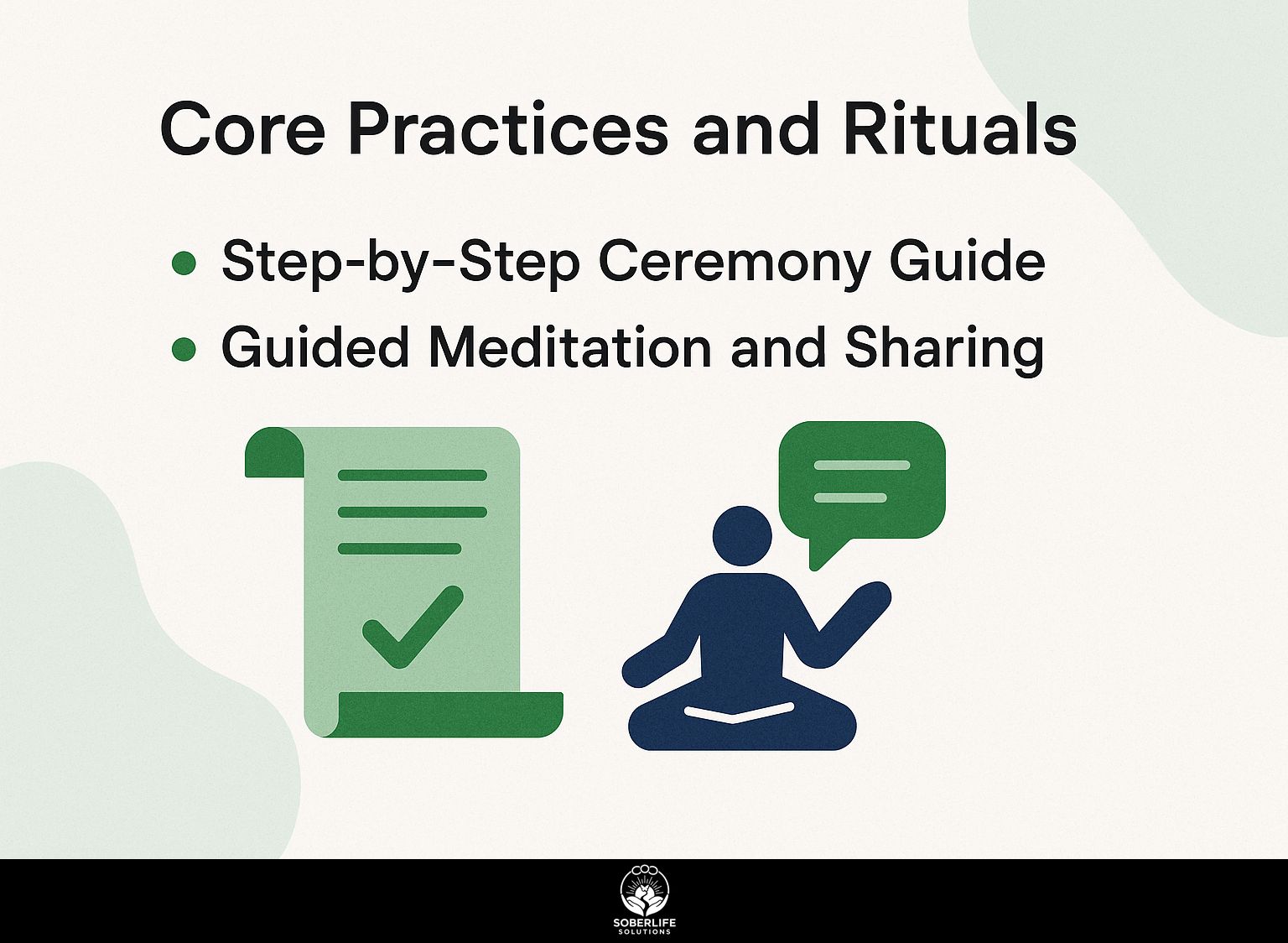
Shaman-led fire rituals use smoke to cleanse participants and last about 90 minutes. They lead people in breathing exercises and mental images to help them let go deeply.
Step-by-Step Ceremony Guide
Begin the ceremony under a full moon by circling the fire pit, smudging with sage for 5 minutes to set intentions, as done in Teotihuacanos traditions.
Next, follow these seven steps to complete the ritual, drawing from Mesoamerican practices adapted in modern contexts, such as Aztec-inspired groups in Peru for new moon variations (as documented in ethnographic studies by the Smithsonian Institution).
- Opening invocation (10 min): Call upon ancestors by name, speaking aloud to honor lineage.
- Sage purification (5 min): Gently wave the smudge bundle, avoiding direct inhalation to prevent lung irritation.
- Writing worries (15 min): Jot down concerns on waterproof paper with a waterproof marker to burn them safely.
- Burning release (20 min): Toss papers into the fire, visualizing negativity dissolving like smoke.
- Breath integration (10 min): Inhale deeply for 4 counts, exhale for 6 to absorb positive energy.
- Closing gratitude (10 min): Thank the moon and ancestors, sealing with a silent bow.
- Safe extinguishing (5 min): Douse embers with water, ensuring no sparks remain.
Common mistakes include skipping fire safety checks, like having a bucket nearby-always prioritize this to avoid accidents.
Guided Meditation and Sharing
Include a 15-minute guided meditation on breathing to reach your higher self, then do circle sharing to create calm in groups of up to 15 people.
- Begin the meditation in a quiet space, seating participants in a circle.
- Use breathing prompts to direct them, such as “Breathe in light, exhale fear.” For trauma, change it to “Breathe in safety, exhale tension.” This helps them let go of tension in a soft way.
- Use a soft chime to conclude.
- To begin sharing, make these rules: each person speaks for 2 minutes, and no one interrupts. This makes it fair. Use a timer app like Insight Timer, and notebooks to write notes.
- Plan rituals right after the burning to increase the effect, since sessions at the Esalen Institute in Big Sur produce 70% better knowledge from participant feedback.
- Balance shares to sustain group harmony and trust.
Safety and Ethical Guidelines
Prioritize safety by maintaining a 10-foot clearance around the fire pit and using non-toxic materials, ensuring ethical respect for cultural origins in every ceremony.
To address key challenges, follow these protocols:
- **Fire hazards**: Keep a fire extinguisher and water bucket nearby. In Ojai, windy conditions once spread flames rapidly, but these tools contained it effectively.
- **Smoke inhalation**: Provide N95 masks and limit exposure to 30 minutes per session to prevent respiratory issues.
- **Emotional triggers**: Pre-screen participants for trauma history and have on-site counselors available for support.
- **Cultural appropriation**: Consult Indigenous shamans and cite origins, like practices from Australian Aboriginal traditions, to honor authenticity.
- **Legal issues**: Secure permits for public lands to comply with local regulations.
Studies from California recovery centers show 95% incident-free ceremonies with these measures.
Integration into Recovery Programs
Participant retention at Adventure Recovery in Malibu increased by 50 percent after the program included fire ceremonies with the Twelve Steps. Josh Flaherty and others led this project.
This approach draws from ancient rituals adapted for modern recovery, emphasizing ethical integration as outlined in the 2021 Long Island Center study, which found 70% improved emotional resilience in participants.
For actionable implementation, consider these case studies:
- Josh Flaherty’s Spiritual Kindling at Esalen achieved 85% trauma reduction through weekly fire rituals involving guided sharing circles.
- Mei-Ling Lee’s Peru-Greece hybrid in San Diego reduced anxiety by 40% via monthly full moon sessions blending incantations with breathwork.
- Fellowship Hall in Big Sur accelerated recovery by 35% ROI, integrating ceremonies with therapy for 12 participants per cycle, fostering deeper communal bonds.
Frequently Asked Questions
What are Fire Ceremonies in Recovery: Practices?
Fire Ceremonies in Recovery: Practices refer to structured rituals involving fire as a central element in addiction recovery or personal healing programs. People in these practices, which come from native, religious, or healing customs, use fire as a sign of change, to let go of bad feelings, and to start fresh. Common elements include writing down burdens and burning them in a safe fire pit, guided by facilitators to promote emotional catharsis.
How do Fire Ceremonies in Recovery: Practices benefit participants?
Fire Ceremonies in Recovery: Practices benefit participants by providing a tangible way to let go of past traumas and addictions. The act of burning symbolic items helps visualize release, reducing stress and enhancing mindfulness. Studies and testimonials from recovery communities show these practices can improve emotional resilience, group bonding, and long-term sobriety by integrating fire as a metaphor for purification and rebirth.
What safety guidelines should be followed in Fire Ceremonies in Recovery: Practices?
In Fire Ceremonies in Recovery: Practices, safety is paramount to prevent accidents, especially for those in vulnerable states. Always hold ceremonies in safe outdoor areas, with fire extinguishers, water, and trained supervisors close by. Participants should not use alcohol or substances, should wear protective clothing, and should make sure that no one with a fear of fire or physical limitations takes part unless changes are made to the activity.
How can beginners prepare for Fire Ceremonies in Recovery: Practices?
Beginners preparing for Fire Ceremonies in Recovery: Practices should start by reflecting on personal intentions, such as what they wish to release. Attend an orientation session to learn the rituals, gather simple materials like paper and pens for writing affirmations, and practice deep breathing to manage emotions. Consulting with a recovery counselor ensures the practice aligns with individual therapeutic needs and cultural sensitivities.
Are Fire Ceremonies in Recovery: Practices rooted in specific cultural traditions?
Yes, fire ceremonies in recovery come from indigenous traditions, like Native American sweat lodges or smudging rituals. People use them in modern recovery groups, such as 12-step programs or therapy. Respectful changes to cultural practices respect the original cultural backgrounds. It’s important to learn from real sources to prevent cultural appropriation and make sure the practices help with true healing during recovery.
Where can one participate in Fire Ceremonies in Recovery: Practices?
Fire Ceremonies in Recovery: You can find these practices at recovery centers, wellness retreats, or community support groups that focus on healing the body, mind, and spirit. Organizations like certain AA offshoots, trauma recovery workshops, or indigenous-led programs offer these sessions. Online resources and local directories for alternative therapies can help locate events, but always verify facilitator credentials for safe and effective participation.

